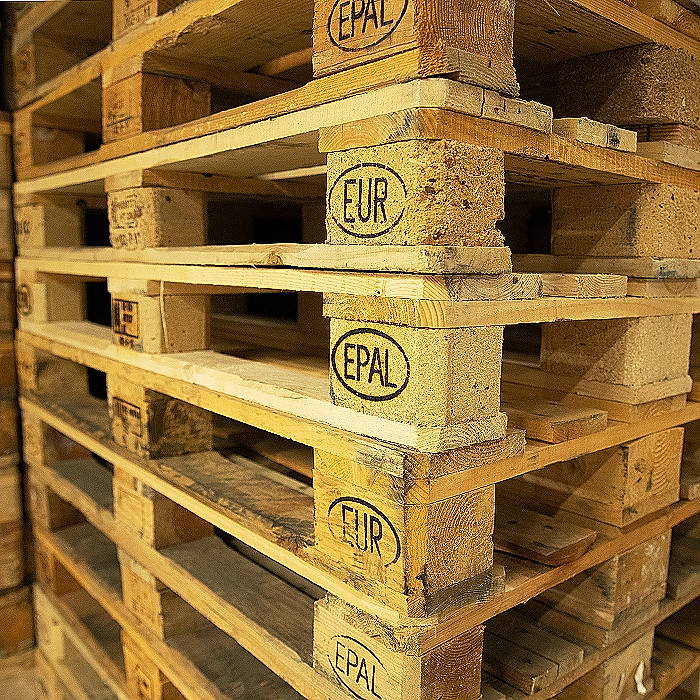Something we often do not think about when we talk about logistics are our load carriers. Those that often form the basis for a simple and flexible handling of large quantities of goods. Roller cages, containers, srs pallets and the so called EU-pallets are some of these. The EU-pallet in particular celebrates 60 years this year since it was standardized for the entire European market.
A EU-pallet, formerly often called an SJ-pallet in Sweden, has been a standardized wooden pallet since 1961 that must have a certain marking and design to be approved. From the beginning, the pallet type is primarily intended for transport by rail, but road transport by truck is also based on this standard. The pallet is developed through a collaboration within the UIC (Union Internationale des chemins de fer, i.e. the International Railway Union) with a number of European countries. The origin, however, can be found in the Swedish cooperative movement and in an inventive carpenter in Skåne.
We have to go back to the end of World War II when an Ivan Lundqvist was sent to the United States on behalf of the Cooperative Union. The co-operation was facing a rapid expansion and, in the USA, Lundqvist would look for suppliers of building materials and furnishings that could suit the KF stores. Once in the United States, however, he saw something completely different that made him think in new directions. He saw something screwed together at a factory in the city of Lexington, Kentucky. A forklift.
The factory in Kentucky went under high pressure and most of it was produced for the US Army. Lundqvist also noted the pallet-like boxes that the truck’s forks could easily lift. He returned home with the idea to start making trucks. The idea was not just that Konsum would win the battle for customers with first-class logistics. When the folk home was soon built, good, rational construction and transport technology was needed.
He received the approval of the KF management and soon six men interested in technology stood in a garage in Bromma and designed the first Swedish forklift. In 1946, one year after the end of the war, the company Bygg & transportteknik, BT, was formed by KF, which began manufacturing hand-drawn lifting trolleys with 15 employees in Stockholm. After a while, production was moved to Mjölby, where the main line met the national railroad, the country’s logistical heart at the time.
Another important person for the development of the EU-pallet was Ivar Svensson, a resident of Gyllsjö in northwestern Skåne. With saved money, he started a small carpentry shop and one of the customers was Helsingborg’s cold store. They needed boxes for the fruit and vegetables that could have been imported again after the end of the war.
With the peace, the American troops in Europe had also begun to sell equipment they no longer needed. In this way, a forklift truck of the Clark model, manufactured in Lexington, ended up at the cold store in Helsingborg. But what would you do with it? The boats were still unloaded and loaded by hand.
Ivar Svensson then designed a pallet that fit the forks of the Clark truck. At the same time, the management of Bygg & transportteknik was in discussions with SJ about what the pallet of the future would look like. They had heard about Ivar Svensson’s pallets at the cold store in Helsingborg and contacted him. The rest is then history as they say.
As early as 1948, when BT, Gyllsjö Träindustri and Statens Järnvägar created the classic pallet, the dimensions that the pallets still have today were determined. A European pallet must be 800 mm wide, have a length of 1200 mm and be 144 mm high. The deviations must only be a few millimeters for the pallet to be approved. A dry pallets weighs about 22-25 kg. It must be able to handle a point load of 1 000 kg and an evenly distributed load of 1 500 kg.
